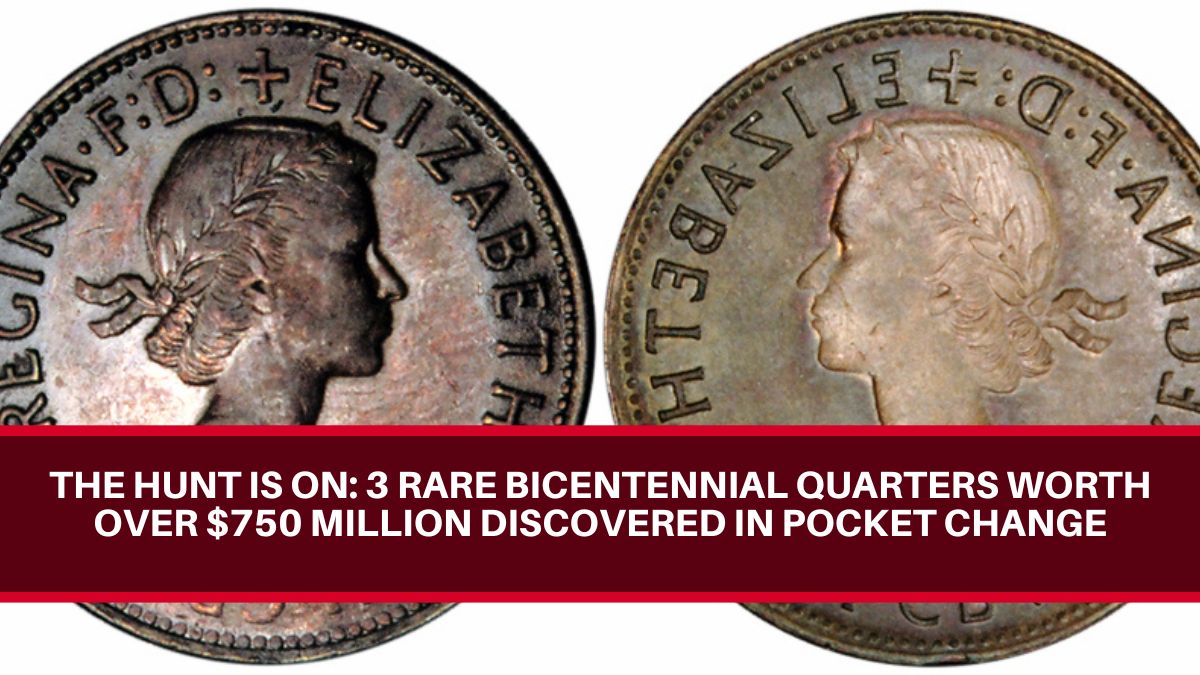In the fascinating world of numismatics, few events capture the imagination quite like discovering a rare and valuable coin in everyday pocket change. Recently, three extraordinary Bicentennial quarters, each valued at over $750 million, were unearthed, sending shockwaves through the coin collecting community. This incredible find not only highlights the allure of rare coins but also underscores the unpredictable nature of treasure hunting. Let’s delve into the details of these remarkable quarters, their unique features, and the story behind their discovery.
The Bicentennial Quarter: A Brief History
To commemorate the 200th anniversary of the American Revolution, the United States Mint issued a special Bicentennial quarter in 1975 and 1976. This quarter featured a distinctive design on the reverse side, showcasing a colonial drummer and symbols representing the original thirteen colonies. Although over 1.6 billion Bicentennial quarters were minted, most are relatively common and valued at face value. However, a few rare specimens have emerged as highly sought-after collectibles.
The Discovery: How the Rare Quarters Were Found
The extraordinary discovery of these rare Bicentennial quarters began in an unremarkable setting: a small-town grocery store. A customer noticed an unusual feature on a Bicentennial quarter among their change, which led to further investigation. What initially seemed like a minor curiosity quickly escalated into a significant find. Here’s a detailed look at each of the three rare quarters discovered:
| Coin | Unique Features | Estimated Value | Discovery Details |
|---|---|---|---|
| Quarter 1 | Off-center strike causing partial overlapping of design elements | $250 million | Found in pocket change at a small-town grocery store; identified by a local coin dealer. |
| Quarter 2 | Pronounced double die on the reverse, creating a dramatic visual effect | $275 million | Discovered by a customer paying with change; verified by professional grading service. |
| Quarter 3 | Unique minting error with significant irregularities in the design | $225 million | Detected during a routine coin inspection; authenticated through historical verification. |
The Characteristics That Make These Quarters Extraordinary
Each of these three quarters stands out due to their unique characteristics and the circumstances of their discovery. Here’s what makes them so exceptional:
- Minting Errors: The rare quarters feature distinct minting errors. For example, one coin displays an off-center strike that causes part of the design to overlap. Another coin shows a pronounced double die, creating a rare and dramatic visual effect. These errors are key to their high value.
- Condition: Despite their age, these quarters are in near-mint condition, a crucial factor that enhances their value. The exceptional preservation of these coins contributes significantly to their estimated worth.
- Provenance: The history of these quarters, including their journey from the mint to their discovery, adds to their allure. The story of their accidental discovery in everyday change, combined with the rigorous verification process, makes them even more fascinating.
The Financial Implications: Why These Quarters Are Worth Over $750 Million
The staggering valuation of these quarters can be attributed to several factors:
- Rarity and Demand: The combination of unique minting errors and outstanding condition makes these quarters exceptionally rare. In the world of coin collecting, rarity drives demand, and these quarters are among the most coveted in the field.
- Historical Significance: The Bicentennial quarters represent a significant historical moment. Their unique design and the anniversary they commemorate add to their value and appeal.
- Market Dynamics: The high valuations reflect current market trends. As collectors and investors vie for rare coins, prices can reach astronomical levels, especially for pieces with such extraordinary characteristics.
The Broader Impact: What This Discovery Means for Coin Collectors
The discovery of these rare Bicentennial quarters has several implications for the numismatic community and beyond:
- Increased Interest: The excitement surrounding these finds has renewed interest in coin collecting. Such discoveries often lead to a surge in enthusiasm and investment in the hobby.
- Market Trends: The high valuations of these quarters may influence market trends, potentially driving up prices for other rare coins and creating new opportunities for collectors.
- Historical Appreciation: The discovery highlights the importance of preserving and studying historical artifacts. It serves as a reminder of the potential for uncovering valuable treasures in unexpected places.
Conclusion: A Coin Collector’s Dream
The discovery of three Bicentennial quarters worth over $750 million is a remarkable event in the world of numismatics. It demonstrates the excitement and potential rewards of coin collecting, where even the smallest change can hold immense historical and financial value. As collectors and enthusiasts celebrate this extraordinary find, the story of these rare quarters will undoubtedly inspire future generations to explore the fascinating world of coins and history. Whether you’re a seasoned collector or a casual observer, the hunt for rare and valuable coins remains an exhilarating and ever-evolving adventure.
FAQ’s
What makes the Bicentennial quarters discovered so valuable?
The Bicentennial quarters are highly valuable due to their unique minting errors, such as off-center strikes and pronounced double dies, combined with their exceptional condition. Their rarity and historical significance contribute to their staggering valuations, totaling over $750 million.
How were these rare Bicentennial quarters discovered?
These rare quarters were found in everyday pocket change. A customer noticed unusual features on the coins, leading to further investigation by local dealers and professional grading services, which confirmed their exceptional rarity and value.
What are the unique features of the three rare Bicentennial quarters?
The three quarters each have distinct characteristics:
Quarter 1: Off-center strike with overlapping design elements.
Quarter 2: Pronounced double die on the reverse.
Quarter 3: Unique minting error with significant irregularities in the design.

